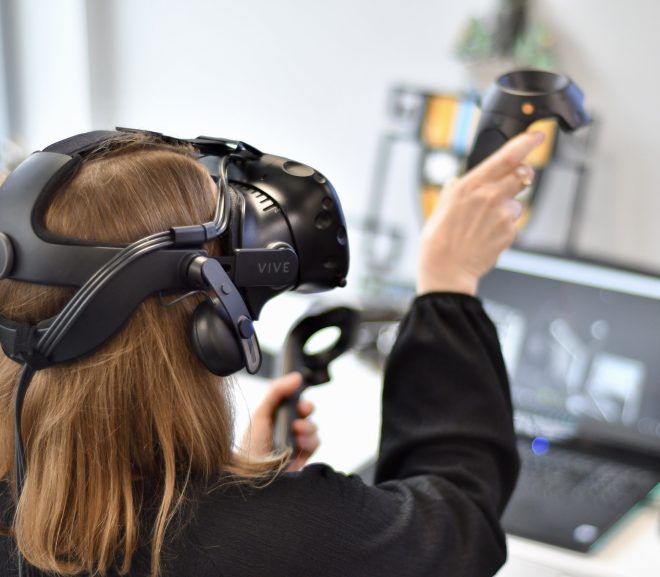In today’s rapidly evolving technological landscape, virtual reality (VR) and augmented reality (AR) have emerged as game-changing innovations with the potential to revolutionize various industries. As an investor seeking new opportunities, venturing into the world of VR and AR companies can be a lucrative decision.
This article aims to provide in-depth insights and guide you through the process of investing in this exciting field.
The Rise of Virtual and Augmented Reality
Virtual reality (VR) and augmented reality (AR) have experienced a remarkable evolution since their inception in the late 1960s. Initially developed for military training purposes, VR has now expanded its horizons to various sectors, including gaming, healthcare, education, and more.
AR, on the other hand, enhances our perception of reality by overlaying digital content onto the real world.
The market potential for VR and AR technologies is growing exponentially as businesses recognize their immense value. According to Statista, the global market for virtual reality is projected to reach a staggering $57 billion by 2027. Similarly, augmented reality is expected to achieve a market value of $140 billion by 2023.
These figures illustrate the increasing interest and investment in these technologies from both consumers and investors alike.
Investing in VR and AR companies presents an opportunity to capitalize on the advancements being made within these industries while potentially reaping substantial financial rewards. By identifying key players at the forefront of innovation in VR and AR technology, investors can strategically position themselves for long-term success.
As technology continues to advance at a rapid pace, virtual and augmented reality are poised to revolutionize numerous fields. From immersive gaming experiences that transport players into virtual worlds to medical simulations that enhance surgical training procedures, the applications of VR and AR are vast and ever-expanding.
Key Factors to Consider Before Investing
Investing in virtual reality (VR) and augmented reality (AR) requires careful analysis of key factors. First, conduct a market analysis to identify sectors experiencing growth. Focus on areas like gaming, healthcare, education, and entertainment.
Next, evaluate established companies with successful track records such as Oculus VR, Sony Interactive Entertainment, and Microsoft HoloLens. Keep an eye on emerging startups disrupting the industry for potential high-value investments.
Stay updated on technological advancements driving VR/AR development like eye-tracking technology and haptic feedback devices. Assess scalability potential by considering compatibility with existing hardware and ease of integration into various platforms.
Carefully analyzing these factors will help make informed investment decisions in the dynamic VR/AR market.
Top VR and AR Companies Worth Considering for Investment
Virtual reality (VR) and augmented reality (AR) are rapidly growing fields with immense investment potential. Here are three standout companies to consider:
Company A merges VR and AR with gaming, offering cutting-edge headsets, motion controllers, and immersive environments. Analyze their financial performance, revenue growth, and partnerships with major gaming studios.
Company B specializes in immersive simulations for medical training and patient rehabilitation. Look into their partnerships with healthcare institutions to gauge credibility and potential adoption.
Company C offers educational VR/AR platforms that enhance learning experiences. Explore user feedback, user base growth, and expansion plans to assess their effectiveness in the education sector.
Investing in these top VR and AR companies can provide opportunities for capitalizing on the growing market demand for immersive technologies.
Risks Associated with Investing in VR/AR Companies
Investing in emerging industries like virtual reality (VR) and augmented reality (AR) comes with inherent risks that investors should carefully consider. One major risk is market volatility, which stems from the constantly changing landscape of these industries.
Market trends and consumer preferences can shift rapidly, potentially impacting the success of companies operating within the VR/AR sectors.
Regulatory challenges also pose significant risks for investors in VR/AR companies. The industry is subject to evolving regulations related to privacy, data protection, and content. As technology advances and new applications are developed, legal frameworks may change to address emerging concerns.
Investors need to be aware of compliance issues that may arise due to these shifting regulations.
Technological limitations are another crucial aspect to consider when investing in VR/AR companies. While significant advancements have been made in VR/AR technologies, certain barriers still exist that can hinder widespread adoption.
Hardware development is a key area where challenges might arise, as manufacturers continually strive to improve the quality and affordability of devices. Compatibility issues between different hardware and software platforms could also impede adoption rates.
Additionally, user acceptance plays a vital role; if consumers are not receptive or comfortable with VR/AR experiences, it could limit the potential market for these companies.
In summary, investing in VR/AR companies involves navigating through various risks such as market volatility, regulatory challenges, and technological limitations. It requires a thorough understanding of the industry dynamics and careful evaluation of each company’s ability to navigate these obstacles successfully.
Strategies for Investment Success in VR/AR Companies
Investing in VR/AR companies requires strategic approaches to maximize success and minimize risks. Diversification is crucial, spreading investments across complementary companies or sectors to reduce exposure to specific risks.
Long-term vision is important, analyzing a company’s growth potential through research, development plans, and strategic partnerships. Staying informed about industry news and trends helps make informed decisions based on market developments.
By employing these strategies, investors can position themselves for success in the dynamic world of VR/AR investments.
Conclusion
[lyte id=’z-T7-3VXxbg’]





